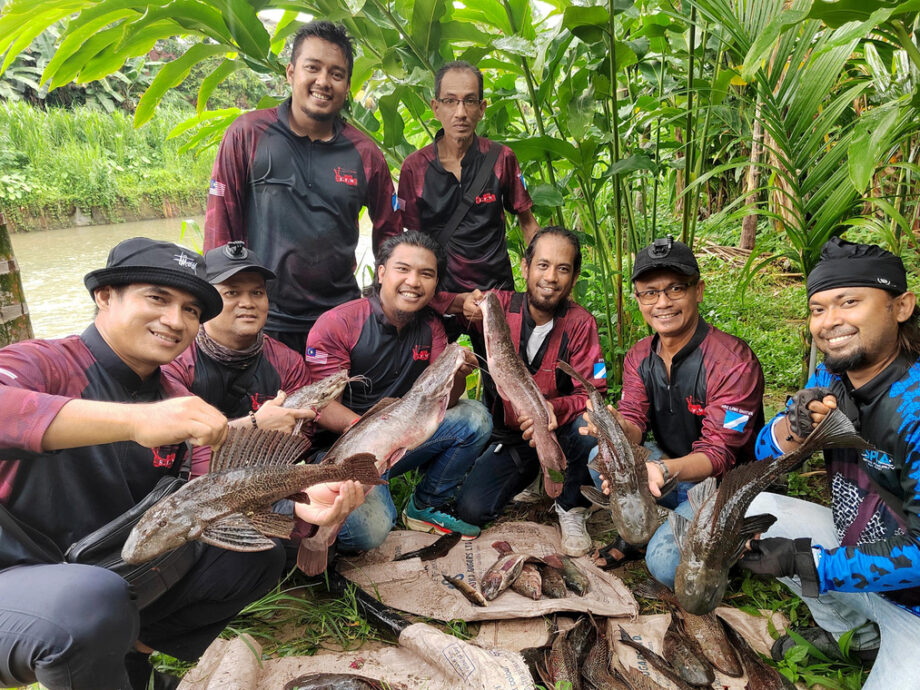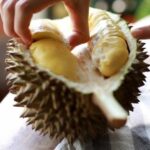A crisis grows beneath familiar waters
With a slingshot in one hand and a fishing reel in the other, freshwater fisherman Muhamad Nasrullah Maludin watches the river below a bridge in Sentul, Kuala Lumpur. Dark shapes glide along the bank. They are plecos, the armored suckermouth catfish that clean algae in home aquariums yet wreak havoc when released into the wild. Nasrullah targets them from the bridge, hauls the catch up, and disposes of it so native fish can reclaim space.
Invasive fish are now embedded across Malaysia. The Department of Fisheries has tracked the spread of non native species to at least 39 locations in Peninsular Malaysia and Labuan since 2021. Plecos and African catfish are the most visible invaders, joined by peacock bass, alligator gar, and redtail catfish. Native favorites such as lampam, tengas, sebarau, and river catfish are losing ground. Conservation scientists warn that plecos dig burrows into riverbanks, muddy the water, block sunlight, and kill underwater plants. That behavior weakens banks and raises flood risks, a threat felt most in urban stretches where rivers are already under pressure from pollution and construction.
The damage shows up in livelihoods. Anglers who once brought home prized native fish now often find nets heavy with plecos, tilapia, and African catfish. On the Denai River in Selangor, one community sweep removed about 1.1 tonnes of plecos but only 1.9 kilograms of native fish. These numbers illustrate a dramatic shift in river life and in the incomes of small scale fishers who depend on healthy ecosystems.
How did aquarium fish conquer rivers?
Most of these species arrived through the aquarium and aquaculture trades. Fish kept to clean tanks or kept as exotic pets grew too large, or owners lost interest, and many were released into drains and rivers. During the Covid lockdown years, hobbyists who could no longer manage big aquariums reportedly let more fish go. Escapes from ponds and cages during floods added to the flow. Once in the wild, hardy species found few obstacles to survival.
They have traits that give them the advantage. Many grow fast, breed early, lay large numbers of eggs, and eat almost anything. Some tolerate low oxygen and dirty water. The African catfish can gulp air at the surface. Several pleco species can draw oxygen from pockets of air in their gut. A peer reviewed study of rivers in the Klang Valley found that alien fish were most abundant where water quality was poorest, with high ammonia and nitrite levels and lower dissolved oxygen. Those conditions suppress sensitive native species while favoring generalists that can exploit any available food.
What makes pleco, peacock bass and catfish so damaging?
Each invader disrupts rivers in a different way. Together they crowd out native fish, erode banks, and reshape food webs. Several also carry pathogens that can sicken native fish in the wild or in nearby farms.
Plecos the riverbank destroyers
Plecos, often called ikan bandaraya, are armor plated bottom dwellers from South America. In aquariums they scrape algae from glass. In rivers they excavate burrows to shelter or spawn. Those holes collapse easily, slice through roots that hold banks in place, and send plumes of silt into the water. Cloudier water blocks sunlight, so aquatic plants die back. Plants are a foundation for river life, providing oxygen, cover for fry, and places where invertebrates feed. Without them, native fish lose nurseries and food.
Plecos also monopolize space below bridges and along reinforced embankments. They pack into cracks and under ledges, where predators cannot reach them. Their armored plates deter many would be predators. With few natural checks, populations build quickly.
Peacock bass a top predator on the rise
Peacock bass (Cichla species), also from South America, are powerful visual hunters that specialize in chasing smaller fish. Reviews of their spread in Malaysia describe four non native species now present across most of the peninsula, with the widest success in lakes. Introductions linked to sport fishing and repeated releases created a steady stream of fish into new waters. Once established, peacock bass take advantage of abundant prey and open habitat to thrive. Their appetite and generalist diet put pressure on small native fish and juvenile stages of larger species.
African and redtail catfish heavy hitters in murky water
African catfish (Clarias gariepinus) and redtail catfish are powerful, fast breeding predators. In many rivers, anglers haul individuals as long as an adult arm or thigh and weighing six to ten kilograms. Fishermen report that these catfish prey heavily on prized natives such as patin, tenggalan, kerai, kelah and sebarau, as well as prawns and crabs. The redtail catfish has spread in major rivers including Pahang, Perak, and Selangor. Both African catfish and redtail catfish adapt to turbid, low oxygen conditions and can travel during floods. Their spines and strength can damage fishing gear, which pushes up costs for local fishers.
Scientists and fisheries officers caution that some alien fish can carry diseases that harm aquaculture and wild populations, including bacterial and parasitic infections. This adds risk for communities that depend on cages and ponds near invaded rivers.
Communities fight back, one cast at a time
Across Malaysia, anglers are recasting their pastime as environmental action. Slingshot Fishing Malaysia, a group formed in 2021, uses handheld slingshots with reels to target plecos and other invaders from riverbanks and bridges. The method keeps volunteers out of polluted water and lets them work in tight urban spaces. The group has attracted thousands of followers and spends weekends on removal drives in the Klang Valley and beyond.
Another network of volunteers that calls itself a foreign fish hunter squad began during the pandemic and has grown to more than one thousand members. In the Klang River basin they report removing nearly 31 tonnes of suckermouth catfish. Depending on water quality, the catch is sold, turned into fertilizer or biochar, used as bait, processed into feed pellets, or disposed of safely. Some anglers have experimented with recipes for pleco from cleaner waters, though experts warn against eating fish from polluted urban rivers.
Mohamad Haziq A Rahman, who leads a large volunteer effort in the Klang Valley, says the point is to reduce numbers and raise awareness. He argues that waiting for a perfect solution is riskier than acting now.
“Yes, this fish will not be completely gone from our rivers. If we do not act now, the outcome would be worse. It is better to take action than to leave it alone. We can at least reduce the population instead of allowing it to take over local fish.”
Community sweeps double as public education. Businesses have begun sponsoring cleanups as part of corporate social responsibility. In Selangor, local authorities have offered cash rewards of one ringgit per kilogram of invasive fish to encourage removals. These steps help create a steady pipeline of volunteers and bring the problem into public view.
Government actions and the law
The Department of Fisheries has labeled the dominance of alien fish a ticking time bomb for native river life. Since 2022, the department has led at least seventeen operations and removed more than 4.4 tonnes of non native fish from Malaysian waters. Officials are tightening biosecurity rules for farms and shops, organizing river sweeps, and pushing nationwide education campaigns so hobbyists do not abandon unwanted pets in waterways. The Fisheries Act 1985 already restricts prohibited species. Violations can bring fines, confiscations, or jail. New proposals would raise penalties to discourage illegal import, breeding, and dumping.
Department of Fisheries Director General Datuk Adnan Hussain has urged the public to understand the ecological costs of alien fish and to help stop new releases.
“The dominance of invasive fish species is a ticking time bomb that threatens native river fish populations.”
States are also moving. In Sarawak, a multi agency Invasive Alien Fish Hunting Programme on the Sarawak River mobilized officers and local fishers for three days of targeted removals. Native fish were released alive. Captured alien fish were recorded and destroyed so they could not return to the water. The drive came with exhibitions and briefings on how invasive species erode banks, degrade water quality, and undercut the incomes of freshwater cage farmers in places like Batang Ai.
Sabah offers a reminder that community management can work. The Tagal system, a traditional Indigenous model revived in the 1990s, sets strict rules for stretches of river (including rest periods and no take zones). Backed by the state fisheries department, Tagal sites in and around Penampang have helped protect habitat, supported ecotourism, and reinforced local stewardship. Tagal committees now pay close attention to non native fish and coordinate with government agencies when action is needed.
Science explains why invasives win
Field research in Klang Valley rivers confirms what anglers see from bridges. Surveys recorded a mix of native and alien fish, with non native species most common in stretches exposed to pollution and heavy human activity. Risk assessments using a standardized screening tool ranked most alien fish as high risk if released in Malaysian waters. The pattern is consistent with a simple idea. When water quality declines and habitat is simplified, native specialists lose their edge while hardy generalists take over.
Diet studies give the mechanism. By examining stomach contents, scientists found large overlap between what aliens and natives eat. Stable isotope analysis, which reads the chemical signatures of diet over time, showed that aliens and natives often feed in the same parts of the food web. Alien fish had higher stomach fullness and broader diets, a sign that they can exploit more food types. That feeding plasticity helps them thrive in degraded rivers, and it squeezes native species that lack the same flexibility.
Add a lack of natural predators and the picture becomes starker. Large armored plecos deter many fish and birds. Big catfish are too large for most native predators once they reach a certain size. Without constant pressure from above, populations can surge between community sweeps.
Public health and safety
Many urban rivers carry pollution from industry and households. Fish from these waters can accumulate contaminants and pathogens. Anglers and community leaders advise against eating invasive fish caught in dirty rivers, and to use gloves when handling spined species. Where water quality is better, some groups turn catches into fertilizer, fish meal, or bait. Any approach must start with accurate local information on river conditions to avoid health risks.
Fish health risks also extend to farms. Alien fish can introduce bacteria and parasites that infect native fish in cages and ponds. Outbreaks reduce yields and raise costs, with knock on effects for food prices and rural incomes. Keeping invasive species out of farm supply chains and preventing escapes during floods are key steps for the aquaculture sector.
What actually works
Prevention is the strongest tool. Do not release aquarium fish, plants, or snails into drains, ponds, or rivers. Return unwanted fish to pet shops or contact local fisheries offices and community groups for advice on surrender and disposal. During flood season, secure ponds and cages so fish cannot escape. Schools and hobbyist clubs can teach identification and responsible ownership to cut down on well meaning releases that cause long lasting harm.
Removal programmes work when they are sustained. Bounties like the Selangor reward create incentives for anglers to keep going. Organized sweeps by community groups, supported by local councils and businesses, remove large numbers and make the issue visible. Competitions that target specific invasive species can be part of this, as long as catches are recorded, processed, or disposed of safely.
Better monitoring helps. Environmental DNA, which detects genetic traces that fish leave in water, can flag new introductions early and guide rapid response. Standardized mapping with simple phone based reporting lets volunteers provide real time data. Universities can help design protocols and analyze trends, while fisheries officers provide legal backing and logistics. Coordination with neighboring jurisdictions matters too. Singapore’s reservoirs and rivers share similar risks, so cross border alerts and shared data reduce surprises.
Rivers that recover are usually those with cleaner water and intact banks. Erosion control, riparian planting, and better wastewater treatment reduce the very conditions that give aliens the edge. Models like Tagal show that rules designed and enforced at community level can protect habitat and provide livelihoods through tourism, provided there is careful management of visitor pressure. A combined approach that improves water quality, limits releases, and keeps steady removal pressure can tilt the balance back toward native fish.
Key Points
- Invasive fish such as plecos, African catfish, peacock bass, and redtail catfish are now present across at least 39 locations in Peninsular Malaysia and Labuan.
- Plecos erode riverbanks and muddy water, which kills plants and raises flood risks in urban and rural stretches.
- Community sweeps have revealed the scale of change, including a Selangor removal where 1.1 tonnes of plecos outweighed 1.9 kilograms of native fish.
- Volunteer groups have removed large volumes, including nearly 31 tonnes of suckermouth catfish from the Klang basin.
- The Department of Fisheries has led 17 operations since 2022, removing more than 4.4 tonnes of invasive fish and tightening biosecurity and enforcement.
- Selangor offers cash incentives per kilogram of alien fish; Sarawak and Sabah run coordinated removal and community management programs.
- Scientific studies link alien fish dominance to poor water quality and show heavy diet overlap with native species.
- Officials warn that full eradication is unlikely once invaders spread, making prevention and sustained community action essential.




